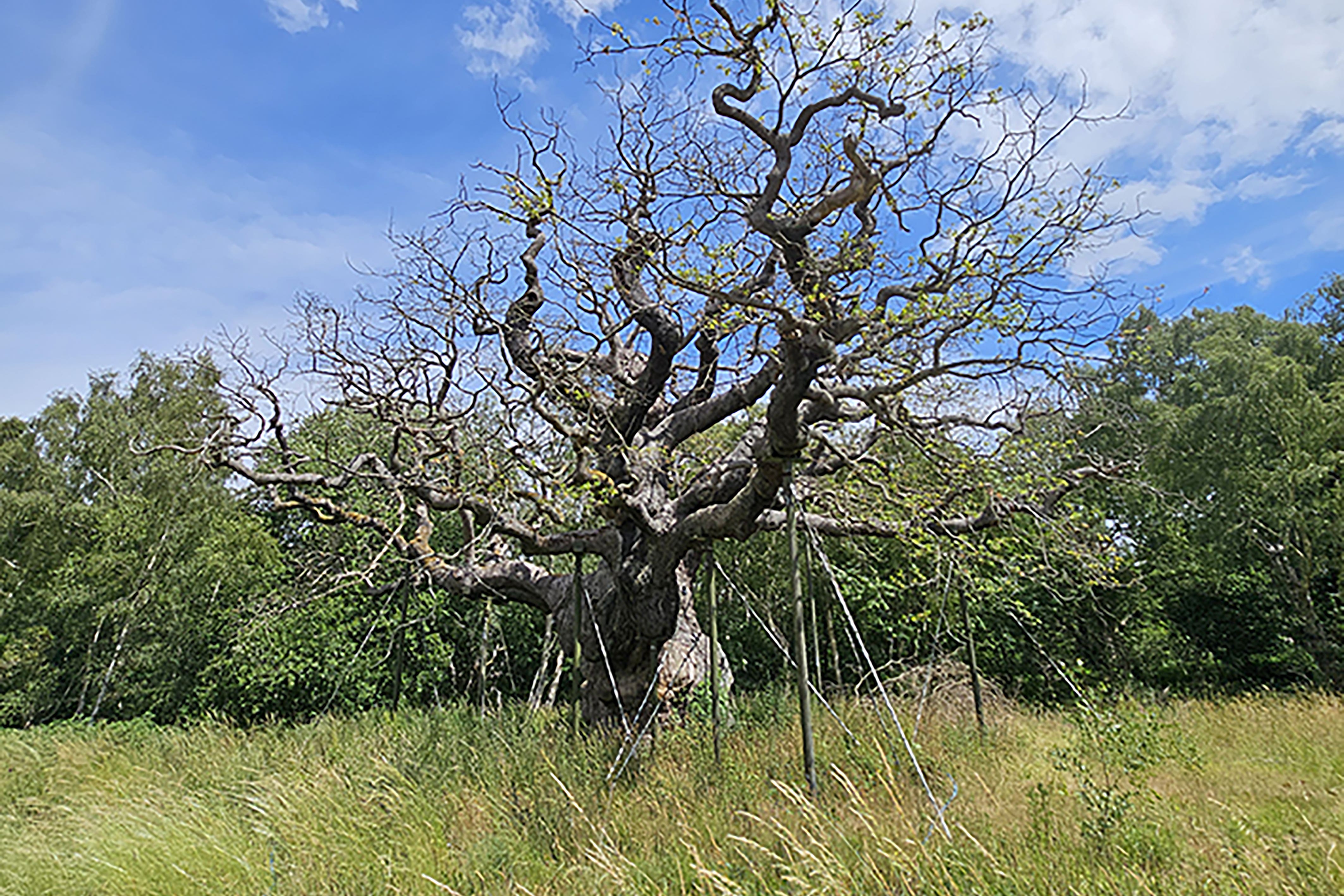The summer heatwaves and the droughts which have followed are hampering attempts to care for a historic tree associated with Robin Hood.
The recent weather has provided a challenge to teams caring for the Major Oak in Sherwood Forest, Nottinghamshire, said the Royal Society for the Protection of Birds (RSPB).
The RSPB is working with tree and soil health specialists to help the 1,000-year-old tree – reputed to have been a hiding place for Robin Hood and his band of outlaws – which is suffering from poor health.
The soil around the base of the tree had been compacted by foot, horse and vehicle traffic, restricting the flow of water, oxygen and the availability of nutrients to the tree’s roots, until a fence was installed around it in the mid-1970s.
The tree’s roots are also in poor condition, with analysis showing a lack of vital interaction with fungi and other organisms.
The charity began a programme in 2023, approved by Natural England, to help recover the roots and sustain the Major Oak.

But it says the warmest June ever recorded in the UK and weeks without significant rainfall in 2025 have added to the urgency of the work already being done for the tree to reverse the impact of compaction.
Staff are regularly watering the tree in response to information provided by technology measuring moisture in the soil.
Teams have also been breaking up the tightly packed soil from around sections of the tree’s compromised roots, adding organic material from the forest to feed the soil and stimulate biological activity before then replacing the earth over the roots.
And a young oak has been felled and laid in the enclosure to release nutrients into the ground as it decays.
Chloe Ryder, the RSPB’s estate operations manager at Sherwood Forest, who has been leading the work, said the heat was providing “massive stress” for the ancient oak.
She said: “For the Major Oak in particular, we have been sourcing the best available scientific advice and evidence from tree and soil health experts to deliver a plan to enhance the health of the tree, if that is even possible at this stage.
“But this considerable task is not made any easier by climate change.
“We can already see that climate change is having a devastating effect on the natural world, and the warning from the Met Office that extreme weather is the ‘new normal’ for the UK gives us real cause for concern.
“The Major Oak has experienced three consecutive summers with prolonged periods of drought during its growing season, and unprecedented high temperatures of 40C in 2022.
“This year, once again, its leaf coverage demonstrates the massive stress that the tree is under.
“A tree this old, with such a complex history, faces gargantuan challenges as it is, which are being continually exacerbated by very hot and very dry summers.”



